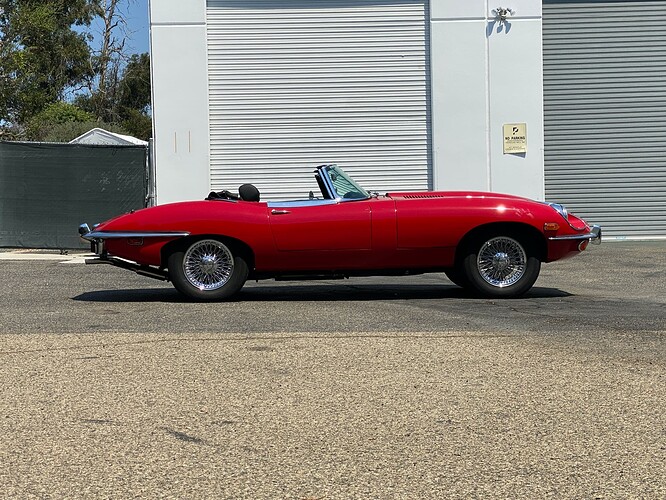I have replaced my original TBs with a set from XKs. They are STD thickness. I have also replaced the bushings and will essentially have a fresh front suspension. I have made the setting gauge to spec per the book, read multiple previous posts, and put it all back together, set it down and drove it about 100 miles.
The ride height, as measured from the lower control arm to the ground is 10 inches. The Complete Official Jaguar “E”, Bentley 2nd revision, page 248, Fig 12 shows the correct height should be 8 3/4". (+/- 1/4"). Quick math says I need to lower by 1 1/4" both sides. ( I guess I got lucky and both sides were the same height, and off by the same amount.
On the old forum I picked up the following: 24 splines in the front 25 in the back. 1 spline equals 3mm. Adjust the passenger side CCW to lower, adjust the Driver side CW to lower. I need 10 splines for 30 mm or just under 1 1/4". I chose to go to eleven splines.
My initial logic led me to believe that if you have the setting gauge in place, it shouldn’t matter what position the TB is in…silly me. So I got it “close” so the rear adjuster holes were just about aligned with the reaction plate and put it all together, using a bit of “force”…only to have the ride height too high as mentioned above.
Checking previous members’ posts, the key I think is my misunderstanding of the significance of the difference between the front and back splines…in that they are different.
Now I am debating on the best way to proceed. Two options:
- Start over with the understanding that, with the setting gauge in place, find the sweet spot on the TB where the front splines are engaged, and the rear adjuster bolt holes are PERFECTLY aligned all the way through the reaction plate.
This is accomplished by rotating the front splines, 1 at a time, inserting… by hand… the front about a 1/4" or so and checking the rear adjuster holes for PERFECT alignment.
Once this sweet spot is found, push the front splines all the way in. This is accomplished by removing the setting gauge thereby allowing the lower control arm to rotate a bit, perhaps giving a better axial alignment for the use of persuasion. Once the front splines are in place, rotate the LCA back in order to reset the gauge and then slide the rear adjuster back in place…and the bolt holes should be PERFECTLY aligned.
OR
- Since I know I am off…high… by about 10-11 splines, rotate the bar and reinstall. The problem here is that now the holes don’t PERFECTLY align. Close, but the bolts will not go through without persuasion.
As I type this out I think option 1…start over and put it all back together once I find the PERFECT alignment.
As always, I appreciate any feedback (am I on the right track?)
and/or your vote for option 1 or 2
Semper Fi,
Dave

